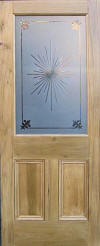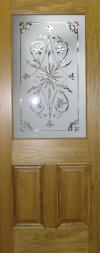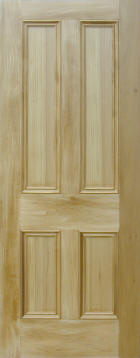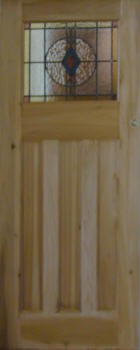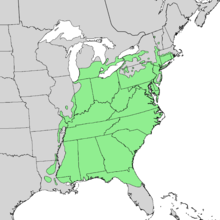Main article:
Tulipwood
Liriodendron tulipifera — known as the tulip tree,
American tulip tree, tuliptree, tulip poplar,
whitewood, fiddle-tree, and yellow poplar — is the
Western Hemisphere representative of the two-species
genus
Liriodendron, and the tallest eastern
hardwood.
It is native to eastern North America from
Southern
Ontario and
Illinois
eastward to
Connecticut and southern
New York,
and south to central
Florida
and
Louisiana. It can grow to more than 50 m (165 feet) in virgin cove
forests of the
Appalachian Mountains, often with no limbs until it reaches 25–30 m
(80–100 feet) in height, making it a very valuable
timber tree. It is fast-growing, without the common problems of weak
wood strength
and short lifespan often seen in fast-growing species. April marks the start
of the flowering period in the southern USA (except as noted below); trees
at the northern limit of cultivation begin to flower in June. The flowers
are pale green or yellow (rarely white), with an orange band on the
tepals; they yield large quantities of
nectar. The
tulip tree is the
state tree of
Indiana,
Kentucky,
and
Tennessee.
The soft, fine-grained
wood of tulip
trees is known as "poplar" (short for "yellow poplar") in the U.S., but
marketed abroad as "American tulipwood" or by other names. It is very widely
used where a cheap, easy-to-work and stable wood is needed. The
sapwood is usually a creamy off-white color. While the heartwood is
usually a pale green, it can take on streaks of red, purple, or even black;
depending on the extractives content (i.e. the soil conditions where the
tree was grown, etc.). It is clearly the wood of choice for use in
organs, due to its ability to take a fine, smooth, precisely cut finish
and so to effectively seal against
pipes
and valves.
It is also commonly used for siding clapboards. Its wood may be compared in
texture, strength, and softness to
white pine.
Used for interior finish of houses, for siding, for panels of carriages,
for coffin boxes, pattern timber, and wooden ware. During scarcity of the
better qualities of white pine, tulip wood has taken its place to some
extent, particularly when very wide boards are required.[4]
It also has a reputation for being resistant to termites, and in the
Upland South (and perhaps elsewhere) house and barn sills were often made of
tulip poplar beams.
